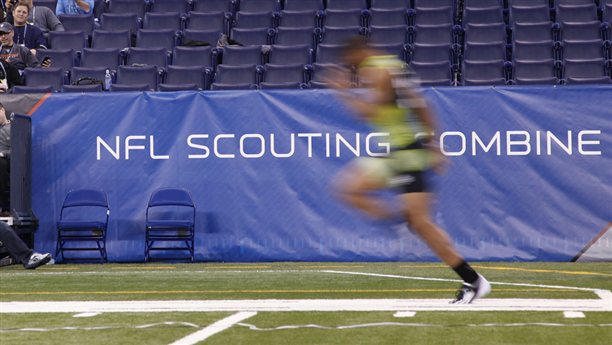
We’re now deep into the dreary NFL offseason. Sustained only by a weekly arrest and a monthly NFL event (February combine, March free agency, April draft), we’ll respectfully debate any topic we can get our diminutive nine inch hands on.
As the NFL Combine in Indianapolis continues this weekend, how should we weight what we find? Clearly, the interview portion has some value, though asking if a draftee’s mother is hot is strange. The tougher aspect is determining just how useful the physical metrics the NFL gathers are in predicting success in the NFL.
It’s become clear that some drills are somewhat predictive for specific positions and in other cases that no drill has any use. What exactly are those correlations?
Below are the very simplified conclusions from the Harvard Sports Analysis Collective. You can read their methodology and more in depth reasoning for both offense and defense.
Offense:
Quarterbacks: two measurements matter: height over 74 inches (6’2”) and shuttle time.
Running backs: this model is more complex, using height, 40-yard dash time, and weight.
Wide receivers: none of the metrics measured at the combine significantly predict the performance of wide receivers.
Tight ends: here, only the 40-yard dash and bench-press matter.
Guards: While center performance depends on shuttle times, 40-yard dash times determine guard play.
Tackles: For tackles, both speed and size matter: performance depends on weight and 40-yard dash time. This model is not the strongest one put forward here,
Full backs: like wide receivers, none of the measurements taken at the combine predict future production of full backs.
To summarize, the vertical leap, broad jump, and 3-cone drill do not accurately predict production at any position. Bench press repetitions are only significant for tight ends. Height is important for two positions (quarterback and running back), as is the 20-yard shuttle (for quarterbacks and centers). Weight matters for tackles and running backs. The 40-yard dash is the most commonly significant statistic, influencing four positions (running backs, tight ends, guards, and tackles).
Defense:
Defensive end: This model is one of the best that the combine data produced. Weight, 40 yard dash and the cone drill are highly predictive of play.
Defensive tackle: Sticking with the defensive line, performance of defensive tackles is harder to project than for defensive ends. Weight, shuttle and bench press.
Outside linebackers: Moving to linebackers, the outside linebacker model is one of the worst ones created from this combine data. Cone drill and 40 yard dash.
Inside linebackers: The model for inside linebackers is not much better than for outside linebackers. 40 yard dash is the only significant variable.
Cornerbacks: Moving to the secondary, cornerbacks benefit from being faster (40 yard dash), more agile (cone drill), and heavy (weight).
Free Safety: The vertical leap does, however, come into play at the free safety position. In perhaps the worst model presented here, only the vertical leap is significant.
Strong Safety: On the other hand, the strong safety model, while still bad, is one of the better models that one can make from this combine data40 yard dash and weight are useful.
These results suggest that most of the measurements taken at the NFL combine are not predictive of NFL production. There are thousands of possible interaction variables that may be significant predictors of future performance. Further, there are a number of other measurements taken at the combine that were not included in this study that may be more predictive of value than those analyzed here. I also looked at a few broader categories, like “linebackers” and “offensive linemen”, but the models produced for individual positions proved to be much better, so I did not include them.
Combined with the offensive models, only the broad jump did not predict future production in any position; most measurements only predicted performance in a few categories. I believe that these models should temper excitement over the results of the combine: because a player puts up a great 40-yard dash time or jumps really high does not say much about how they will perform in the NFL.





































Facebook
Twitter
RSS